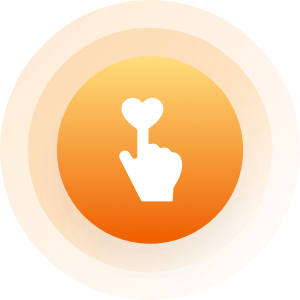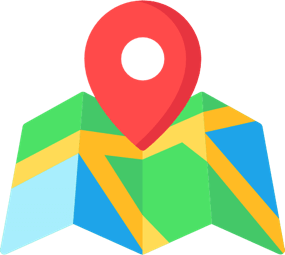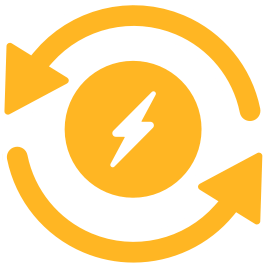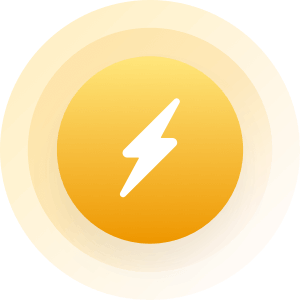| Topic: Have a hdd question.... | |
|---|---|
|
Edited by
Peccy
on
Sat 04/21/12 07:22 PM
|
|
|
I bought a 1 tb Iomega external hd last year and it worked great, then I upgraded laptops last month to a Dell Inspiron, win 7, 8 gb ram last month and it won't recognize it. I have changed cables, drive letters, everything the Iomega site reccomends and zilch. It recognizes it's a hd, DISK 1 but it says it's 0 mb and I can't open it.
The weird part is that it now won't open on my old Toshiba 3 gig of RAM, win 7 upgrade from xp either. It did it fine before until this dell. I did a data migration from my toshiba to the dell, but it wouldn't recognize my hd on the first day and I migrated weeks later. I have some sensitive documents on my Iomega that I need access to, can anyone help? One more thing this dell is 64 bit my old one was 32 |
|
|
|
|
|
It sounds like your HDD has died. If you are comfortable, you can take the drive apart and test the hard drive inside it to see if it's still good. If that doesn't work, you can pay a data recovery company to try to get your important files back.
Start storing your important files on a cloud drive, Amazon has a free 5 gig cloud drive. You can also pay for a company to give you cloud drive space. |
|
|
|
|
|
Edited by
Peccy
on
Sat 04/21/12 08:17 PM
|
|
|
But I forgot to mention I have a maxtor 500 gb ex hd too that did the same thing....both hd within minutes on the same day? I'm downloading some firmware updates from dell as we speak maybe that will help..
UPDATE- there were some BIOS updates and some external hd updates too maybe those will hellp |
|
|
|
|
|
sensitive documents = porn
|
|
|
|
|
|
You're HD may think someone is trying to hack it and has locked you out.
I use a Wd ext. When my gate died and I got this Vaio...I could not use the WD. I had to take it to the geek. He had to reset my sync between the new laptop and the WD. Not sayin this is you're problem, but it sounds .....familiar!!! |
|
|
|
|
|
You're HD may think someone is trying to hack it and has locked you out. I use a Wd ext. When my gate died and I got this Vaio...I could not use the WD. I had to take it to the geek. He had to reset my sync between the new laptop and the WD. Not sayin this is you're problem, but it sounds .....familiar!!! If that is the case, you can do the following: http://support.microsoft.com/kb/308421 |
|
|
|
|
|
Still wrestling w/ this damn thing....it recognizes my Iomega, but as a removable disk, therefore it says 0 mb avail!
|
|
|
|
|
|
sensitive documents = porn |
|
|
|
|
|
I have an external HDD as well and I am also an IT student, It has had similar problems once or twice transfrerring back and forth between laptops and not allowing me to access my files. Obviously you may want to consider opening it on a different computer and saving the files then reformatting/paritioning it on your newer computer. This will ensure that data encryption and formatting procedures are suitable to be read by that computer from your external hdd. A frew likely causes isthe file system it used when formatting the hdd also data encryption could prevent the device from bei recognized properly and showed as low mb storage capacity. I recomend trying to partiton a section of your drive and allocating likie 10mb's. This may also helop you diagnose the problem.
1. Go to the control panel and find 'disk managemet' usually a good way to find this (it depends on which OS you have) is to click on system (it has a 3d circle with a peace of it sectioned off as the graphic). keep drilling in this section by clicking on things like 'computer management' ect. until you see disk management in the pane (prolly on the left). 2. WHen you find disk management it wil show all storage devices...see if your externall is recognized by it. If it is right click on the box and choose 'shrink' , 'shrink volume' or something similar and allocate 10mb's of memory. It will open a series of dialogs that you may not feel comfortable answering suchas fileformatting ect. CHoose NTFS for file formatting and 10240 bytes in size and reformat the section of your hdd and see how it works. This may or may not work as it may stil;l not be recognized in the dsk manager but you may find something new. |
|
|
|
|
|
I've tried that, but since the disk is not reading correctly it won't let me do it.....how bout if I create a new profile, think it may recognize it? I'll try tomorrow I am fed up! thanks though!
|
|
|
|
|
|
We are all offering solution strategies based on different assumptions about what the problem might be. This is only a problem if the solution is destructive in any way (makes changes to the drive!).
Based on the info you gave, Spider and Ghost made reasonable evaluations of what may be wrong. I'm ignorant of windows, so I cannot be sure I'm interpreting your symptoms correctly, but it seems to me there is another possibility: that either your partition table or your file system have been corrupted, which is the basis for the rest of this post. --------------- Do you have (or can you borrow) additional drives? All of your data is most likely recoverable, as long you can bypass any hardware failures. I've been handed drive's by windows users who swore they couldn't do anything with the drive - that it seemed to be completely broken and non-recoverable. I'm not a windows expert, but apparently corrupted or erased partition tables can sometimes look like hardware failures under windows. I found these drives much easier to diagnose and fix under linux. Fortunately, you don't have to install linux to recover a drive - you can use a livecd. Running a linux tool called foremost has allowed me to recover data from every kind of data loss I've come across except a truly physically non-functioning drive (like one that won't one even spin). Do you have access to another, blank drive? Possibly one that you can borrow from a friend for a week? If so, the first thing I would do would be to make a backup image of the terabyte drive. I've also found some drives that were suffering some unknown physical problems would work intermittently a few more times before completely failing. In that case, getting the data off the drive before it completely fails is key. Even if the partition table is corrupt, you can still make a complete backup of the drive. Since windows recognizes it as a drive, its virtually certain that is will be recognized as a device under linux (ie, it has an entry under /dev). That (and a 2nd drive to copy them onto...) is all you need to run foremost and most likely recover all of your important files from the drive. Then, if the drive is physically fine, you can safely wipe, repartition, and reformat the drive. Until then, I would not do anything that causes any changes to that drive without being certain that the action is helpful and not harmful. |
|
|
|
|
|
Physically the drive seems fine, it lights up, but has always been very quiet so I don't know if it's spinning. But I have another external maxtor 500 gb that this computer won't recognize either. And it has always been extremely loud and it's spinning. I don't know if windows has locked them out or what. It recognizes my SDD's and flash drives just fine.
I may give livecd a try. thanks! |
|
|
|
|
|
So the terabyte isn't recognized by either the dell or the toshiba, and the 500gb isn't recognized by the dell.
Is the 500gb recognized by the toshiba? This could be relevant to the theory that the dell caused a change on the terabyte, rendering it unreadable to the toshiba. --- If you do use a live CD - then before you do anything else I would simply try mounting and opening the drive under linux. --- When I want to know whether a hard drive is spinning I test it (gently!) for acting like a gyroscope. I wasn't going to mention it at first because you can damage your drive if you are not gentle. But then I read some other websites recommending the same thing - so maybe its safe enough to recommend. All do is hold the drive (from the edges) perfectly horizontally, in my splayed fingers. Then I slowly lift one side about 1-2 cm higher then the other side. My fingertips feel the slight push as the drive resists the rotation. |
|
|
|
|
|
No actually the toshiba can't read either drive any longer...
I don't understand, how do I open it under linux on a windows 7 machine? |
|
|
|
|
|
Do you use the same USB cable for both drives?
|
|
|
|
|
|
No actually the toshiba can't read either drive any longer... I don't understand, how do I open it under linux on a windows 7 machine? If you happened to grab a livecd from a modern, user friendly distro (like ubuntu), then (after booting up the livecd) it will auto-detect the drive and the drive will show up either in your file manager, on the desktop, or both. If you didn't grab a modern distro tell me which one and i'll tell you what to do. The info that I would really like to see as a starting point is the output of "fdisk -l". (That's an ell, not a one). You may have to do this as root, depending on the distro. Also, it may help to see what "lsusb" says both before and after attaching the drive. Do you have another drive you can copy your data onto? |
|
|
|
|
|
The very first thing I would do, if its possible, is to use 'dd' to dump the *entire drive* onto another drive. Someone should walk you through that, because if you mis-type one letter while using 'dd' you can overwrite the data on the wrong drive!
I've never tried this with anything over 80gb, I'm guessing a terabyte drive would take a very long time to copy in this way. I looked around for people who are smarter/better informed than I to see what they would recommend. I found this: https://help.ubuntu.com/community/DataRecovery |
|
|
|
|
|
Here's another page explaining many of the same techniques.
http://www.howtogeek.com/howto/15761/recover-data-like-a-forensics-expert-using-an-ubuntu-live-cd/ These pages can seem a bit confusing to people who are not familiar with linux. I'm happy to help walk you through it (at least those parts I've done before...) Most of it will not be necessary or useful - it depends on what is actually wrong. If it turns out to be something like a bad cable or a drive that locked you out, then none of this will be helpful. |
|
|
|
|
|
No actually the toshiba can't read either drive any longer... I don't understand, how do I open it under linux on a windows 7 machine? If you happened to grab a livecd from a modern, user friendly distro (like ubuntu), then (after booting up the livecd) it will auto-detect the drive and the drive will show up either in your file manager, on the desktop, or both. If you didn't grab a modern distro tell me which one and i'll tell you what to do. The info that I would really like to see as a starting point is the output of "fdisk -l". (That's an ell, not a one). You may have to do this as root, depending on the distro. Also, it may help to see what "lsusb" says both before and after attaching the drive. Do you have another drive you can copy your data onto? |
|
|
|
|
|
I dl it, wrote it to cd, now windows won't recognize it as a valid program, should I just use a mem stick?
|
|
|
|
|








